
Dermatologie in Beruf und Umwelt
Scope & Guideline
Connecting Clinical Insights with Environmental Dermatology
Introduction
Aims and Scopes
- Occupational Dermatology:
The journal extensively covers dermatological conditions related to occupational exposures, providing insights into diagnosis, treatment, and prevention strategies for work-related skin diseases. - Allergic Reactions and Dermatitis:
A significant focus is on allergic contact dermatitis and other allergic reactions associated with various occupational settings, including detailed case studies and practical testing methodologies. - Guidelines and Recommendations:
The journal publishes evidence-based guidelines for the diagnosis and management of occupational skin diseases, aiding healthcare professionals in implementing best practices. - Legal and Regulatory Aspects:
It addresses the legal framework surrounding occupational dermatology, including discussions on compensation, legal definitions of occupational diseases, and new regulations that impact practice. - Research and Innovations:
The journal emphasizes new research findings and innovations in dermatological treatments, including systemic medications and barrier-repair therapies, enhancing clinical practice.
Trending and Emerging
- Impact of COVID-19 on Dermatology:
The pandemic has prompted a surge in studies addressing skin reactions associated with personal protective equipment (PPE), reflecting the immediate need for understanding the dermatological implications of prolonged PPE use. - Innovations in Treatment Options:
There is an increasing emphasis on novel treatments for occupational skin diseases, particularly the use of biologics and systemic therapies, showcasing advancements in dermatological care. - Interdisciplinary Approaches:
Research focusing on interdisciplinary methods in occupational dermatology, integrating perspectives from occupational therapy, psychology, and preventive medicine is on the rise, promoting holistic patient care. - Environmental Dermatology:
Emerging studies on the interactions between environmental factors and skin health, including the effects of climate change and exposure to pollutants, indicate a growing concern for dermatological impacts in occupational settings. - Regulatory Changes and Their Implications:
As legal frameworks evolve, there is an increasing focus on the implications of new regulations for occupational dermatology, indicating a need for practitioners to stay informed on compliance and practice adjustments.
Declining or Waning
- General Dermatological Conditions:
There has been a noticeable decrease in publications focused solely on general dermatological conditions, as the journal shifts its emphasis towards occupationally relevant skin diseases. - Historical Perspectives:
Themes centered on the historical context of dermatology or retrospective studies have become less frequent, indicating a trend towards more contemporary and applied research. - Non-Occupational Skin Diseases:
Research that does not directly pertain to occupational exposures or environmental factors has seen a decline, as the journal increasingly concentrates on the implications of work-related skin conditions. - Basic Dermatological Science:
There is a reduction in papers focusing on basic dermatological science without direct application to occupational health, reflecting a pivot towards practical, clinical applications.
Similar Journals
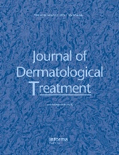
JOURNAL OF DERMATOLOGICAL TREATMENT
Elevating standards in skin treatment and care.The JOURNAL OF DERMATOLOGICAL TREATMENT, published by TAYLOR & FRANCIS LTD, is a premier forum dedicated to advancing the field of dermatology through the dissemination of high-quality research. Since its inception in 1989, this journal has maintained a significant impact on the dermatological community, currently ranking in the top quartile (Q1) of the Dermatology category with an impressive Scopus ranking of #14 out of 142 journals, reflecting its reputation among peers and its contribution to the clinical and academic landscape. The journal shifted to Open Access in 2023, enhancing the accessibility of groundbreaking findings to researchers, clinicians, and students worldwide. With a commitment to publishing diverse articles, from innovative treatment modalities to comprehensive reviews, the JOURNAL OF DERMATOLOGICAL TREATMENT serves as an invaluable resource for professionals seeking to stay at the forefront of dermatological science in a rapidly evolving field.
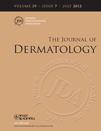
JOURNAL OF DERMATOLOGY
Innovating skin care practices with cutting-edge findings.The Journal of Dermatology, published by Wiley, is a premier academic journal dedicated to advancing the field of dermatology, with its esteemed reputation reflected in its Q1 ranking in Dermatology and a remarkable Q2 ranking in Miscellaneous Medicine as of 2023. Since its inception in 1974, the journal has become a vital resource for researchers, clinicians, and students alike, covering pioneering studies and cutting-edge advancements in skin health and disease. With a Scopus rank of #32 out of 142 in the Dermatology category, placing it in the 77th percentile, the journal underscores its commitment to fostering knowledge and innovation within the dermatological community. Although the journal operates under a subscription model, it remains an essential platform for disseminating impactful research that shapes clinical practice and enhances patient care. For anyone invested in dermatological sciences, Journal of Dermatology serves as a key publication where critical insights and developments are regularly showcased.
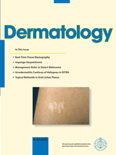
DERMATOLOGY
Fostering collaboration in the pursuit of skin health.DERMATOLOGY, an esteemed journal published by KARGER, is a vital resource in the field of dermatological research and clinical practice. Established in 1893, with its comprehensive coverage extending to 2024, this journal has earned its place as a leading publication, holding a prestigious Q1 quartile ranking in Dermatology and ranking 15th out of 142 in the Scopus Medicine - Dermatology category, reflecting its 89th percentile standing within the discipline. The journal aims to disseminate innovative research findings, critical reviews, and clinical studies that advance the understanding of skin disorders and their treatments. While primarily available through institutional subscriptions, DERMATOLOGY remains committed to enhancing accessibility and fostering international collaboration among researchers, professionals, and students in the dermatological community. Its rigorous peer-review process guarantees the highest quality of published works, making it an essential reference for those dedicated to advancing dermatological science and improving patient care.

Current Dermatology Reports
Bridging the gap between practice and innovation in dermatology.Current Dermatology Reports is a distinguished journal published by SPRINGER that focuses on the latest advancements and research in the field of dermatology. With an ISSN of 2162-4933, this journal provides a vital platform for clinicians, researchers, and students to disseminate groundbreaking findings and emerging trends pertinent to skin health. Notably recognized within the Q2 category in Dermatology for 2023, it ranks 50th out of 142 journals in the Scopus database, placing it in the 65th percentile among its peers. This accessible journal, which has been converging scholarly contributions since its establishment in 2012, plays a crucial role in bridging the gap between clinical practice and research, thereby enhancing patient care and advancing scientific understanding of skin-related issues. The editorial team is committed to the rigorous peer-review process, ensuring high-quality publications that reflect the evolving landscape of dermatology. Researchers and healthcare professionals are invited to contribute and engage with content that pushes the boundaries of knowledge in this dynamic discipline.

ARCHIVES OF DERMATOLOGICAL RESEARCH
Empowering Knowledge for Healthier SkinArchives of Dermatological Research is a premier journal dedicated to the rapidly evolving field of dermatology, published by Springer. With a distinguished history dating back to 1971 and indexed in the top quartiles (Q1 in Dermatology and Q2 in Medicine, 2023), this journal serves as a vital resource for researchers, clinicians, and students alike. It publishes innovative findings, critical reviews, and comprehensive studies that advance our understanding of dermatological conditions and treatments. The journal's commitment to disseminating high-quality research in a field crucial to public health emphasizes the importance of advancing knowledge in skin science and therapy. For those looking to explore significant advancements in dermatology, Archives of Dermatological Research offers an invaluable platform for scholarly discourse and knowledge exchange, though it is not an Open Access journal. Based in Germany, this publication attracts a global audience and remains at the forefront of dermatological research until its anticipated converged years reaching 2024.
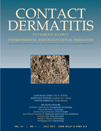
CONTACT DERMATITIS
Enhancing Treatment Strategies for Skin ConditionsCONTACT DERMATITIS, published by WILEY, is a leading international journal focused on the vital field of dermatology, particularly examining the diagnosis, treatment, and management of contact dermatitis and related skin conditions. With origins dating back to 1975 and a planned convergence period extending to 2024, this esteemed journal serves as a crucial resource for researchers, clinicians, and healthcare professionals dedicated to advancing knowledge in dermatological practices. In the latest rankings, it has achieved a commendable Q2 classification in Dermatology and Q3 classification in Immunology and Allergy for 2023, underscoring its significance within these dynamic fields. Moreover, it holds a notable ranking of #29/142 in Medicine & Dermatology and #130/233 in Medicine & Immunology and Allergy according to Scopus metrics, placing it in the top tier of scholarly publications. While the journal operates on a subscription basis, its comprehensive reviews, original articles, and insightful research findings are invaluable for pushing the boundaries of current dermatological and immunological knowledge. By fostering a deeper understanding of the complexities of skin reactions and their implications, CONTACT DERMATITIS plays a vital role in connecting research with clinical practice, making it an essential read for anyone engaged in the field.
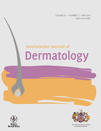
AUSTRALASIAN JOURNAL OF DERMATOLOGY
Exploring the forefront of skin health innovation.Australasian Journal of Dermatology is a leading publication in the field of dermatology, issued by Wiley since 1951, and reaching an audience of researchers, clinicians, and students interested in the latest advancements and practices in skin health. With an ISSN of 0004-8380 and an E-ISSN of 1440-0960, this journal stands out with its Q2 ranking in both Dermatology and Miscellaneous Medicine, positioning it within the top 61st percentile of its category according to Scopus. Although it does not provide Open Access options, Australasian Journal of Dermatology is committed to disseminating high-quality research that informs clinical practices and promotes scholarly dialogue. By publishing rigorous and peer-reviewed articles focused on various aspects of dermatological science, the journal plays a pivotal role in enhancing the dermatology community's understanding of skin conditions and treatments, making it an invaluable resource for professionals and students alike.
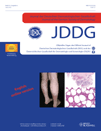
JOURNAL DER DEUTSCHEN DERMATOLOGISCHEN GESELLSCHAFT
Advancing dermatological science through rigorous research.JOURNAL DER DEUTSCHEN DERMATOLOGISCHEN GESELLSCHAFT, published by Wiley, is a prominent periodical in the field of dermatology, recognized by its Q2 quartile ranking in the 2023 dermatology category. With a dedicated focus on advancing knowledge in dermatological science, the journal publishes rigorous peer-reviewed research that encompasses a range of topics including clinical studies, research methodologies, and innovative treatment practices in dermatology. Its impact is reflected in its Scopus ranking, where it stands at #48 out of 142 in the medicine dermatology category, placing it in the top 66th percentile. Although not an Open Access journal, it serves as a critical resource for researchers, clinicians, and students alike, facilitating the dissemination of high-quality research findings and fostering a deeper understanding of dermatological conditions and treatments. With years of convergence from 2003 to 2024, this journal remains a vital platform for scholarly dialogue and discovery in dermatology.
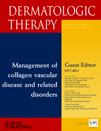
Dermatologic Therapy
Empowering the dermatology community with vital research and reviews.Dermatologic Therapy is a leading peer-reviewed journal published by WILEY-HINDAWI that focuses on the multifaceted field of dermatology. Established in 1996 and continuing its profound impact into 2024, the journal has earned an impressive Q1 rating in Dermatology and ranks 11th out of 142 in the Scopus categorization, placing it in the 92nd percentile. With its headquarters in the United Kingdom, the journal's mission is to advance the understanding and treatment of skin diseases through the dissemination of high-quality research, reviews, and clinical information. Although not an open-access journal, it provides extensive access options to ensure that vital research reaches its audience. By leading scholarly discourse and innovation in dermatological treatments, Dermatologic Therapy serves as an essential resource for researchers, clinicians, and students dedicated to improving skin health worldwide.
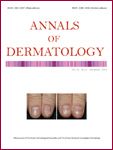
Annals of Dermatology
Uncovering the latest in dermatology since 1989.Annals of Dermatology is a prestigious academic journal published by the Korean Dermatological Association, focusing on the latest research and advancements in the field of dermatology. With a commitment to advancing knowledge in skin health and disease, this journal serves as a vital resource for researchers, clinicians, and students working in dermatology and related disciplines. Since its inception in 1989, it has evolved to consolidate its position in the academic community, boasting a Q2 ranking in the 2023 Dermatology category and a Scopus rank of #87 out of 142, placing it in the 39th percentile. Although it operates under a subscription model, the journal's impact factor reflects its significance in advancing dermatological research, attracting innovative studies and reviews that shape clinical practice. With a publication history extending from 1989 to 1996 and then from 2008 to the present, Annals of Dermatology continues to be an essential publication for those devoted to improving skin health.